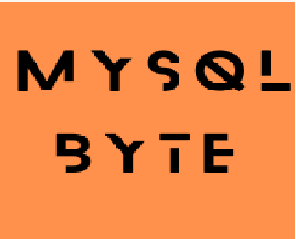Introduction:
In this blog post, we will discuss the process of migrating MySQL users to Amazon RDS and transforming MySQL user grants to make them compatible with Amazon RDS.
Challenges:
Amazon RDS does not provide shell access to the operating system, and it restricts access to some procedures that require advanced privileges. As a result, some MySQL users with ALL PRIVILEGES cannot be directly migrated to Amazon RDS because it does not support certain privileges like SUPER, SHUTDOWN, FILE, and CREATE TABLESPACE.
Solutions:
To manage changes to the MySQL configuration, RDS parameter groups are used. Amazon RDS also provides stored procedures to perform administrative tasks that require SUPER privileges.
Migration Queries:
We can migrate MySQL users to AWS using the following SQL queries:
- To migrate users:select concat ('CREATE USER "',user,'"@"',host,'"' , ' IDENTIFIED WITH ', plugin,' AS "',authentication_string ,'";'),"user" t from mysql.user p where host!='localhost' ;
- To migrate privileges:select concat("grant ",group_concat(PRIVILEGE_TYPE), " ON . to ", GRANTEE,';'),"all_priv" as priv from information_schema.USER_PRIVILEGES where GRANTEE not like "%'localhost\'" and PRIVILEGE_TYPE != 'USAGE' and PRIVILEGE_TYPE in ('SELECT','INSERT','UPDATE','DELETE','CREATE','DROP','RELOAD','PROCESS','REFERENCES','INDEX','ALTER','SHOW DATABASES','CREATE TEMPORARY TABLES','LOCK TABLES','EXECUTE','REPLICATION SLAVE','REPLICATION CLIENT','CREATE VIEW','SHOW VIEW','CREATE ROUTINE','ALTER ROUTINE','CREATE USER','EVENT','TRIGGER') group by GRANTEE
union
select concat("GRANT ",group_concat(PRIVILEGE_TYPE), " ON ",TABLE_SCHEMA,",.* to ", GRANTEE,';'),"db_priv" from information_schema.SCHEMA_PRIVILEGES where GRANTEE not like "%'localhost\'" and PRIVILEGE_TYPE != 'USAGE' and PRIVILEGE_TYPE in ('SELECT','INSERT','UPDATE','DELETE','CREATE','DROP','RELOAD','PROCESS','REFERENCES','INDEX','ALTER','SHOW DATABASES','CREATE TEMPORARY TABLES','LOCK TABLES','EXECUTE','REPLICATION SLAVE','REPLICATION CLIENT','CREATE VIEW','SHOW VIEW','CREATE ROUTINE','ALTER ROUTINE','CREATE USER','EVENT','TRIGGER') group by GRANTEE,TABLE_SCHEMA
union
select concat("GRANT ",group_concat(PRIVILEGE_TYPE), " ON ",TABLE_SCHEMA,",.* to ", GRANTEE,';'),"Table_priv" from information_schema.TABLE_PRIVILEGES where GRANTEE not like "%'localhost\'" and PRIVILEGE_TYPE != 'USAGE' and PRIVILEGE_TYPE in ('SELECT','INSERT','UPDATE','DELETE','CREATE','DROP','RELOAD','PROCESS','REFERENCES','INDEX','ALTER','SHOW DATABASES','CREATE TEMPORARY TABLES','LOCK TABLES','EXECUTE','REPLICATION SLAVE','REPLICATION CLIENT','CREATE VIEW','SHOW VIEW','CREATE ROUTINE','ALTER ROUTINE','CREATE USER','EVENT','TRIGGER') group by GRANTEE,TABLE_SCHEMA;In conclusion, Amazon RDS is an excellent platform for hosting MySQL databases. However, when migrating MySQL users to Amazon RDS, some grants may fail due to having privileges that are not supported by RDS. By following the solutions discussed in this blog post and using the migration queries provided, you can successfully migrate your MySQL users to Amazon RDS.


